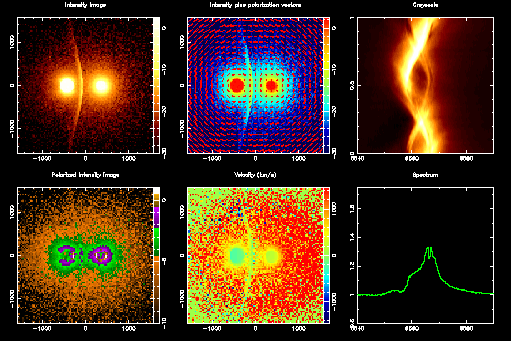 |
This is a simulation of colliding winds using TORUS. Illustrated (clockwise, from top-left) are the intensity image, the intensity + polarization vectors, a greyscaled dynamic spectrum of Halpha, the Halpha spectrum, the velocity image, and finally the polarized intensity image. Note the complex changes in Halpha with phase. |



